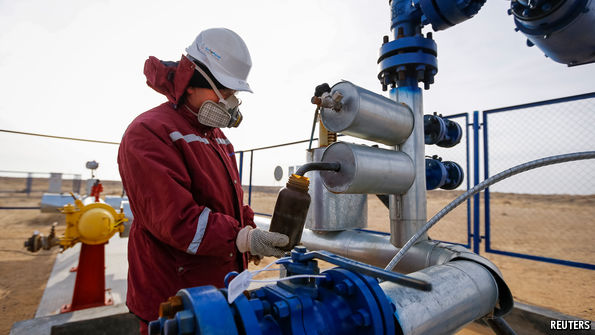A new job for DNA

WHAT lies beneath? It is a pressing question for those prospecting for oil, planning shale-fracturing or seeking geothermal-energy sites. Underground reservoirs of water, oil and gas are connected in extensive, circuitous networks that can change with time or with drilling. Knowing those networks’ particulars can make a big difference to beliefs about how much can safely be extracted from them.
To acquire such knowledge, drillers often use tracers. These are materials that can be injected into the ground in small amounts at one point and then detected reliably if they turn up in other places—thus showing that those places have subterranean links to the point of injection. The supply of decent tracers, however, is limited. About 100, mostly dyes or mildly radioactive materials, are in routine use. This constrains the number of possible injection points in a particular area, and thus the amount of tracking that can actually be done. Yet in many cases—for example, a long well that runs horizontally through a particular rocky stratum—more than 100 injection points might ideally be required. The numerical constraint on tracers extends, moreover,…Continue reading
Source: Economist




